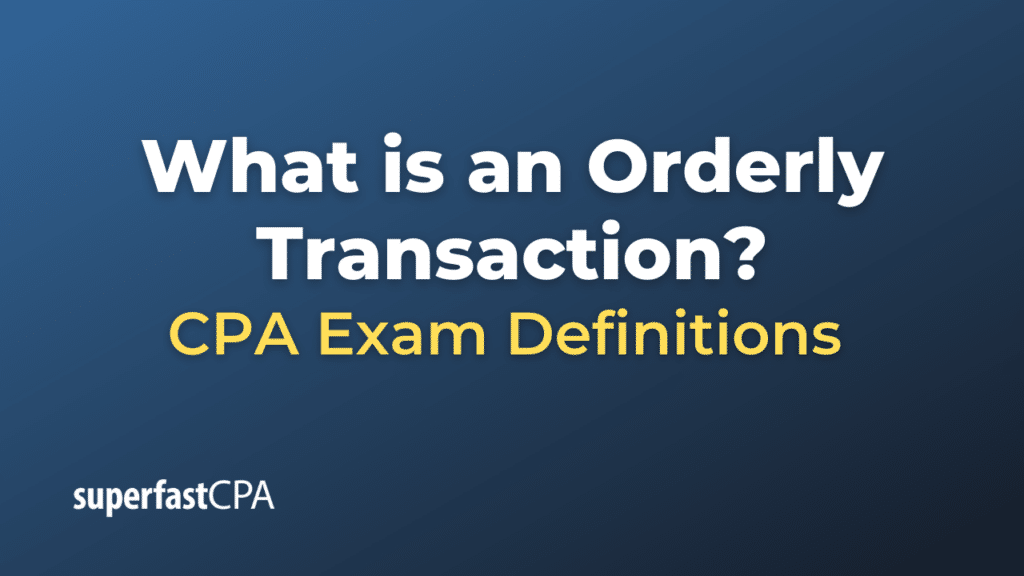Orderly Transaction
An orderly transaction refers to a transaction that occurs under normal market conditions without being forced or rushed, allowing for adequate exposure in the market to get a fair price. It assumes that both the buyer and seller are willing, knowledgeable, and able to transact, and neither is under any undue pressure to complete the deal.
In the context of financial accounting, the concept of an orderly transaction is often used in the fair value measurement of assets and liabilities. According to accounting standards, the fair value of an asset or liability should reflect the price that would be received or paid in an orderly transaction between market participants at the measurement date.
An orderly transaction contrasts with a distressed or forced transaction, where the seller might be under pressure to sell quickly, often due to financial difficulties, and thus may not be able to obtain the best price for the asset.
For instance, if a business needs to quickly liquidate its assets to pay off debts, it might not have time to find the best buyer or negotiate the best price, resulting in a sale at a lower price than what could have been obtained in an orderly transaction.
Example of an Orderly Transaction
Let’s consider a scenario involving two sales of similar used cars to illustrate an orderly transaction versus a distressed transaction.
Orderly Transaction: Jane has a used car she wants to sell. She isn’t in any hurry and is willing to take the time necessary to find a buyer who will pay a fair price. She does her research to understand the market value of her car, posts an advertisement online, and negotiates with several interested buyers. After a few weeks, she sells the car for $10,000, which reflects its fair market value.
Distressed Transaction: On the other hand, John also has a used car to sell. However, he has just lost his job and needs to quickly generate cash to cover his living expenses. He can’t afford to wait for the best offer and instead sells the car to the first buyer who makes an offer, which is $8,000. This price is lower than the car’s market value, but John feels pressured to accept it because of his financial situation.
In this example, Jane’s sale would be considered an orderly transaction because she wasn’t under any undue pressure to sell, she had sufficient time to market the car and find a buyer, and the sale price reflects the car’s fair market value. In contrast, John’s sale would be considered a distressed transaction because he had to sell quickly under pressure, which resulted in a sale price lower than the car’s market value.













